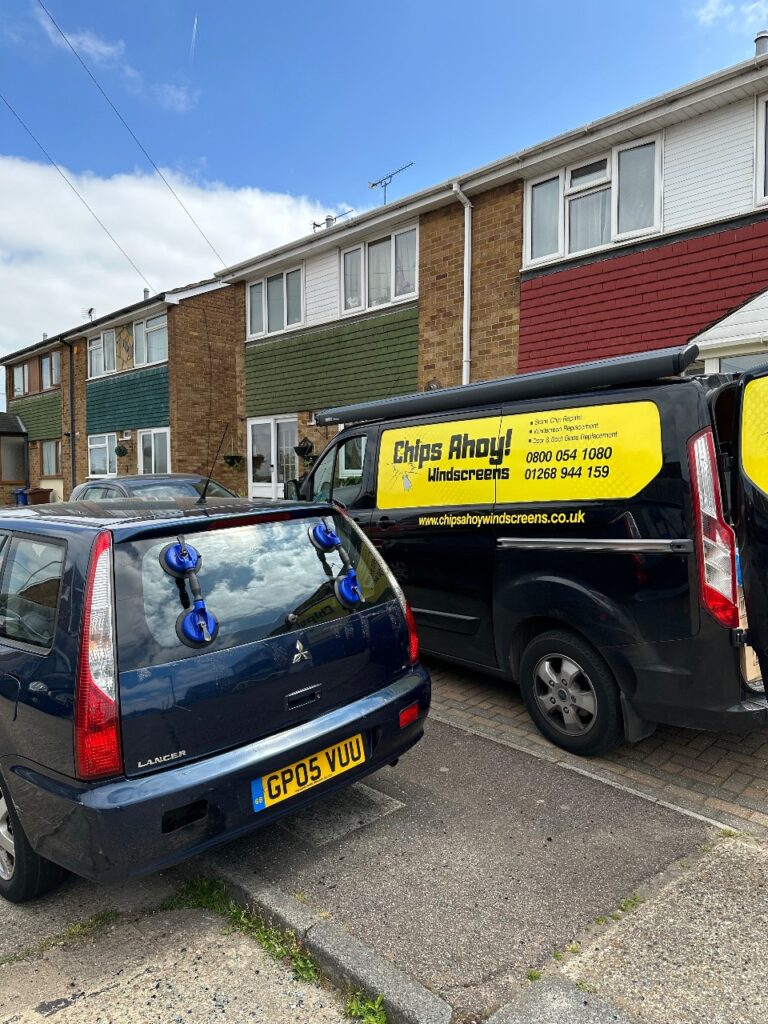A chip in the windscreen can easily escalate to a crack, compromising the vehicle’s structural integrity and the driver’s safety. For UK drivers, understanding the anatomy of windscreen damage isn’t just beneficial; it’s vital. This comprehensive guide seeks to demystify the various types of windscreen damage and their potential implications.
The Windscreen: More than Meets the Eye
Composition: Modern windscreens are made of laminated glass, comprising two sheets of glass with a plastic layer in between, ensuring that they don’t shatter upon impact.
Purpose: Beyond protecting against wind and debris, the windscreen provides structural strength to the vehicle, aids in airbag deployment, and supports advanced driving assist systems.
Classifying Windscreen Damage
- Bulls-eye: A circular damage caused by the impact of a round object, like a stone.
- Chip: A small piece of glass removed by an external impact.
- Crack: A distinct line that can range from under an inch to the width of the windscreen.
- Star Break: Short, radiating cracks coming out of a central point of impact.
- Combination Break: Multiple types of breaks in one impact point.
Factors Influencing Damage Severity
Point of Impact: Damage directly in the driver’s line of sight poses greater risk than damage in other areas.
Size and Depth: Larger and deeper damages are generally more concerning than smaller, superficial ones.
Temperature Fluctuations: In colder UK months, rapid temperature changes can exacerbate existing damage.
Physical Stress: Rough roads or jarring bumps can cause minor damage to spread.
Repair or Replace? Making the Decision
- Assessing the Damage: Damage smaller than a pound coin, and not in the driver’s direct line of sight, can often be repaired.
- Safety Considerations: Cracks at the edge can compromise the car’s structural integrity and typically necessitate replacement.
- Cost Implications: While repairs are cheaper, delaying necessary replacements can lead to more costly issues down the line.
The Repair Process Demystified
Cleaning the Area: Before any repair, the damaged area is thoroughly cleaned to remove debris.
Injecting Resin: A special resin is then injected into the chip or crack, filling it.
Curing and Polishing: The resin is cured using ultraviolet light and then polished to restore clarity.
Prevention: Reducing the Risk
Safe Driving Distances: Maintaining distance from heavy vehicles can reduce the risk of debris hitting the windscreen.
Parking Wisely: Avoid parking under trees or in areas where sudden temperature changes are likely.
Immediate Attention: Addressing minor damages promptly can prevent them from escalating.
Economic Impacts of Neglect
Decreased Resale Value: Visible windscreen damage can significantly reduce a vehicle’s resale value.
Potential MOT Failure: In the UK, significant windscreen damage can result in a failed MOT test.
Increased Repair Costs: Over time, untreated damage often spreads, leading to more expensive repairs or replacements.
The Role of Insurance in Windscreen Repairs
Covered Repairs: Many insurance policies in the UK cover windscreen repairs as part of comprehensive coverage.
Claiming Process: Understanding your insurance policy can streamline the claiming process, ensuring swift repairs without out-of-pocket expenses.
No-Claim Bonus: Some insurers offer windscreen repair without affecting the no-claim bonus, offering peace of mind to policyholders.

Technology’s Role in Detecting Windscreen Damage
Advanced Sensors: Some modern vehicles come equipped with sensors that can detect even minor windscreen damages, alerting the driver promptly.
Mobile Apps: There are apps available that, using your smartphone’s camera, can assess windscreen damage and recommend whether a repair or replacement is needed.
Integrated Dash Cams: Dash cameras aren’t just for recording incidents; advancements now allow them to analyse real-time footage and spot potential windscreen issues.
Impact on Driving Performance and Safety
- Distorted Vision: Even minor damages can refract light in unpredictable ways, potentially blinding drivers momentarily.
- Structural Vulnerability: The windscreen provides up to 30% of the vehicle’s structural strength. Damage can compromise this, making the car less safe in a collision.
- Airbag Deployment: The windscreen aids in the correct deployment of passenger-side airbags. Damaged windscreens can alter this, risking improper airbag function.
- DIY Repairs: Pros, Cons, and Precautions
- The Allure of DIY: With DIY windscreen repair kits available, many are tempted to fix minor damages themselves to save costs.
- When to DIY: Small chips, especially those not in the driver’s line of sight, might be suitable for DIY repairs with the right tools.
- Precautions: DIY repairs are not always a substitute for professional work. Improper repairs can lead to further damage or compromise safety. Always follow kit instructions meticulously and know when to seek professional help.
Contact Us
In the world of driving, knowledge truly equates to power. Understanding the intricacies of windscreen damage equips drivers with the tools to make informed decisions, ensuring safety on UK roads. As we navigate our journeys, let’s pledge to prioritise immediate action on windscreen damages, understanding that clarity isn’t just about vision—it’s about ensuring every journey’s safe conclusion. Safe driving to all from everyone here at Chips Ahoy!!
